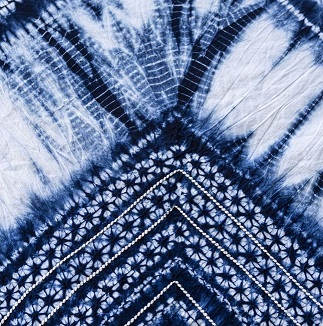SIGN UP FOR NEWSLETTER
Be the First to Know. Sign up to newsletter today

India produces fantastic indigenous block printed fabrics using vegetable dyes. The Indigo colour is most popular. For instance, Indian fabrics are distinct in texture, weave and print and vary from one region to the other.
Available at Delhi:- Prapun, Anokhi, Janpath Market
Available at Jaipur:- Rattan Textiles, Krishna Stores, Radha Prints
Shop in Chennai at:- Anokhi
Vegetable dye printing for example, is a form of hand printing or block printing normally done on cotton or other eco-friendly fabrics using only parts of plants (leaves, flowers, fruits, seeds, barks and roots) as colouring agents. In addition, right from the pre-treatment of the fabrics to its finishing, each and every step of this dyeing process requires close attention to detail.Among all the prints, the Indigo colour is the most popular.
In ancient Indian history, for instance, natural dyes were used for the purpose of colouring the fabrics. Interestingly, the tradition was to put fruits and berries to use. Later, vegetable dyes came into the picture. Furthermore, one may find references to the properties of vegetable dyes in the Vedas–the oldest and sacred scriptures of Hinduism. In addition, the Arthashastra of Kautilya also refers to the use of vegetable dyes along with their uses.
Above all, vegetable dyes have been used extensively in the Ajanta cave paintings in Maharashtra. They are among the magnificent surviving examples of ancient Indian art form. For example, dating back as far back as 2nd century BCE to about 480 CE, these paintings bear witness to the use of vegetable dyes.
Some of the popular vegetable colour extracts are as follows:-
HARDA – It is prepared from fruit of Harda and produces yellow and grey colours.
RHUBARD – It is prepared from a shrub in the Himalays. The roots of this shrub produces yellow and orange shades.
INDIGO BLUE – It is a fermented dye of leaves of indigo ferra tinctoria. As the name indicates, it produces blue shades. It is ancient dye.
CATECHU (KIKAR, BABUL) – It is extracted from the bark of Indian gum Arabic tree. It produces brown and yellow shades.
POMEGRANATE (ANAR, DARIM) – The dye is extracted from its fruit rind and produces a yellow colour.
In addition, vegetable dyes are used in block printed textiles made in Jaipur and in Maheshwari cotton fabrics.
Be the First to Know. Sign up to newsletter today
31 views